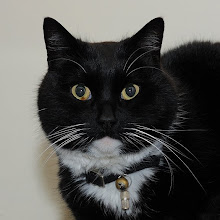First of all: happy 2010 and all best wishes!!
In a series of future articles it is the intention to discuss the various regiments of marines in the British Army during the reign of the Stuarts. The Royal Marines date from 1755, and before that time it was customary that army regiments were re-roled as marines and were operating aboard ships. Especially in times of war, like the Anglo - Dutch Wars, an increase of marine regiments is observed. Though these regiments remained part of the army, they were paid for by the naval treasury.
The subject of this first article is a regiment of the famous Anglo - Dutch Brigade that became a marine regiment in 1698. This was William Seymour's Regiment of Foot, which was formed in 1674 and of which Seymour became colonel on 3 October 1694. This regiment was converted to marines 1 August 1698 during the great disbandment after the Nine Years' War, and the debate on the size of the standing army to be retained. This regiment, together with several other foot regiments, was converted to marines, and thus placed on the Navy Establishment, in order to save it from disbandment. However, this could not save the regiment and it was disbanded anyway on 20 May 1699.
Since this regiment did not survive into the 20th Century like the other two regiments of the Anglo - Dutch Brigade (the future Northumberland Fusiliers and Warwickshire Regiment), its early history is better studied from Dutch sources than English. For example, Dalton does not provide a clear lineage.
The regiment was raised in 1674 at Bois-le-Duc from English troops in Dutch service and designated as the 2nd English Regiment. It's first colonel was William Molyneux - Disney whose commission dates from 1 January 1675. Following colonels were: Ralph Widdrington (or Roger Warington) on 1 January 1676, Thomas Dolman (see also the Holland Regiment) 1 August 1676. Later that year William MacDowell succeeded him. On 31 January 1678 Thomas Butler, Earl of Ossory, became colonel of the regiment and commander of all English regiments in Dutch service. After his death in 1680 Alexander Canan (or Canon, Cannon) became colonel on 30 July 1680. In 1689 Canan would command some Jacobite forces in Scotland. In 1685 Thomas Herbert, the 8th Earl of Pembroke and 5th Earl of Montgomery, succeeded Canan. On 17 April 1688 the colonelcy was bestowed on Henry Sydney, the future 1st Earl of Romney, and John Cutts was given command as colonel-commandant. The regiment, however, became known as Cutt's Regiment and is designated as such in, e.g., the calendar of state papers domestic from early 1689 on.
As stated above, William Seymour became colonel in 1694, until the regiment's disbandment in 1699. Later Seymour would be colonel of the future 24th Regiment of Foot (1701 - 02) and future 4th Regiment of Foot (1702 - 17). This latter regiment was converted into a marine regiment in 1703, and in 1702 Seymour was appointed as Brigadier-General of the Marine Forces.
Subscribe to:
Post Comments (Atom)




No comments:
Post a Comment